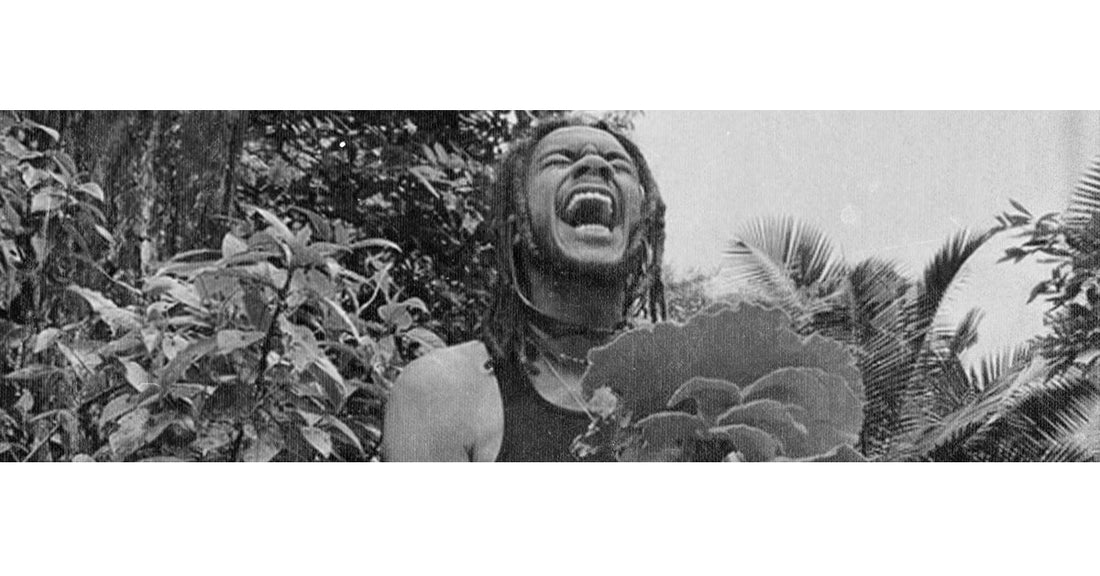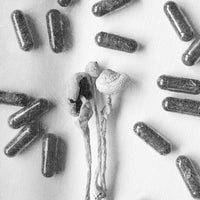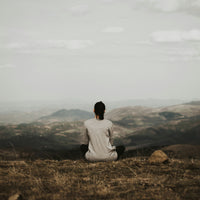To call yourself a molecular biologist, one doesn’t need an advanced degree in science or expensive equipment. No, all you need to study the building blocks of living matter is a keen interest in the world around you and a willingness to learn. Just ask 27-year-old citizen scientist and mycologist William Padilla-Brown.
“You don’t have to be some person that’s spent hundreds of thousands of dollars to go to college for however many years to do this stuff,” Padilla-Brown says. “You can just be some high school dropout person and do the most cutting-edge science.”
Padilla-Brown’s accolades read like a scholar’s fantasy: He published the first English-language handbook on how to cultivate Cordyceps militaris, the fungus famous for its medicinal properties; he founded his own mushroom cultivation and research lab, Mycosymbiotics; he leads community mushroom foraging and cultivation classes nationwide; he teaches his friends microbiology.
(Not to mention he’s a MUD\WTR ambassador.)
The Self-Taught Mycologist
Aside from one permaculture class and a day-long course on DNA sequencing, Padilla-Brown has no formal schooling in mycology or biology. The truth is, his own passion and motivation fueled his self-study of mushrooms and their genetic sequence. Now, he hopes to spread his knowledge to fledgling mycologists the world over through his classes on mushroom foraging, cultivation and on-site, mobile DNA sequencing.
Padilla-Brown’s path toward citizen science began as a child. He split time between military bases across America with his father and international cities in the U.K., Mexico and Taiwan with his mother, who worked for the USDA Foreign Agricultural Service. This global upbringing exposed Padilla-Brown to people of all socioeconomic and educational backgrounds, which would eventually inform his teaching style as an adult.
At 16, he dropped out of high school and started self-educating. He immersed himself in meditation and psychedelics, he learned about the land and how to harvest his own food, honing in on mushrooms at 18, cultivating them at home and eventually selling them to local restaurants and markets.
Two years later, Padilla-Brown had an epiphany while tripping: All life is interconnected. This mindset shift impacted his work in the ensuing seven years; to understand oneself in this universe is to understand the collective experience, complex scientific concepts included.
“Whenever I understand a new science, a piece of the mirror gets a smudge off of it and I can see my face better,” he says. “When I learn a new plant, I can see myself better because that's part of me.”
Padilla-Brown's Pandemic Pivot
Through his work with Mycosymbiotics, which he founded in 2015, Padilla-Brown has transformed his Pennsylvania basement into a fully-fledged laboratory. It’s there where he grows mushrooms, utilizing genetic sequencing techniques he’s taught himself and professional-grade equipment he’s amassed. Though he’s always had an interest in molecular biology, Padilla-Brown never had the time to sit down and study the science. In March 2020, when the global pandemic brought the world to a halt and forcing him to cancel his traveling and teaching plans, Padilla-Brown sunk his teeth into mushroom DNA sequencing. With his stimulus money, he bought a mini DNA amplification kit online and studied YouTube videos explaining the science. Within weeks, he was successfully extracting DNA from the mushrooms he grew in his lab.
Padilla-Brown is now taking the genomic mushroom sequencing operation on the road. After watching the computational biologist Laura Boykin’s 2019 TED Talk, which described her work with the Cassava Virus Action Project and how the organization used mobile, on-the-ground DNA sequencing to identify viruses killing cassava crops in East Africa, Padilla-Brown realized he could use the same tools and practices for mushroom DNA sequencing in the field.
Padilla-Brown connected with Boykin on Instagram and this winter, she visited his home lab so they could tinker together. “She came to my house and talked to me like I was a regular person—not like I was a collegiate student—and told me how to use the tools from my perspective, and not from the perspective of some academic shit,” he said.
Cataloging Nature
A late-September trip to Puerto Rico served as a proof-of-concept expedition for Padilla-Brown’s mobile lab. If he could bring smaller, travel-friendly versions of his lab equipment—a laptop, centrifuge, a PCR machine and a DNA sequencer—into the field and teach students and everyday people in Puerto Rico the basics of how to sequence DNA, he could bring complex scientific concepts to communities the world over.
“What I want to do is go to more remote regions and train individuals, mostly native people, how to use this technology to sequence not just mushrooms but other species in their environment that are at risk of extinction or maybe species that are undescribed to science,” Padilla-Brown says. “We’re witnessing rapid deforestation all around the planet and in that deforestation, we’re losing a lot of animal species and insect species … their DNA becomes even more valuable once they’re extinct. I think it's important for more people to be cataloging life as it’s here before it’s not.” Read more: WTF is Astromycology?
Read more: WTF is Astromycology?
This radical approach to science requires leveling with people, avoiding jargon-heavy instruction, much like Padilla-Brown’s experience with Boykin. He remembers his childhood, interacting with classmates from different backgrounds, and taps into a chameleonic teaching style that caters to his specific audience. “It’s that ability to turn off the ego,” he says, “and be able to relate to people where they're at—because anybody can learn this stuff, but it has to be relatable to them.”
For Padilla-Brown, getting this technology into the hands of people who never considered themselves scientists, or thought lab equipment inaccessible or beyond their grasp, will be for the betterment of society. He cites a study which presents techniques and protocols—using the same equipment he currently utilizes—allowing for cheap and accessible DNA sequencing. What Padilla-Brown has done for democratizing mushroom cultivation, he believes, is possible with genetic sequencing. “I want people to be empowered with science.”
Allie Volpe is a journalist based in Philadelphia. She has contributed to the New York Times, The Atlantic, Rolling Stone and more. Follow her on Twitter.
Read more: The Daily Rituals That Fuel William Padilla-Brown
Read more: Can Fungi Save the World?




